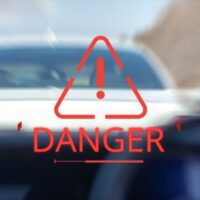Five Kinds of Aggressive Driving

Aggressive driving, mostly the first two categories of aggressive driving mentioned below, are responsible for about half of the car crashes in San Diego County. Most kinds of aggressive driving increase the risk of a wreck as well as the force in a collision. Nevertheless, most people drive aggressively, in at least one of the following ways, almost every time they get behind the wheel.
Aggressive driving is usually negligence, or a lack of care. If a lack of care causes injury, a Carlsbad personal injury lawyer can obtain substantial compensation for victims. This compensation usually includes money for economic losses, such as medical bills, and noneconomic losses, such as pain and suffering.
Speeding
Excessive speed is a factor in about a third of the fatal car crashes in California. Speed, which has always been an issue for many drivers, became even more of an issue during the coronavirus pandemic. When roads largely emptied and traffic enforcement largely ceased, many drivers pushed the envelope. This bad habit, like so many others, has proven easy to form and hard to break.
Velocity multiples stopping distance. At 30mph, most vehicles travel about six car lengths between the moment a driver sees a hazard and the moment the vehicle stops. Stopping distance multiples to eighteen car lengths at 60mph.
Velocity also multiplies the force in a collision, according to Newton’s second law of motion. So, a low speed fender-bender is a high speed catastrophic wreck.
Running a Red Light
If the road ahead seems clear, many drivers treat red lights like yield signs. They might slow down as they enter the intersection, but they hardly ever stop. When one vehicle t-bones another one at almost full speed, at least one person usually dies. The force is so extreme.
Rolling right turns cause many pedestrian and bicycle crashes. Most people look to the left when they turn to the right. Therefore, they don’t see pedestrians in the crosswalk to their right, or bicycles moving across the street to their right, until it’s too late to avoid a wreck.
These collisions are usually lower speed collisions. But these victims are also completely exposed to danger in these situations. Therefore, the injuries are just as bad, or worse.
Tailgating
Like speeding, tailgating increases the risk of a wreck and the force in a collision. Many drivers get nervous when other drivers tailgate them. Other drivers respond violently when that happens. Furthermore, the less space between vehicle A and B, the less time vehicle B’s driver has to brake and at least slow down prior to impact.
Changing Lanes Without Looking/Signaling
Today’s cars and trucks often have blind spot sensors that alert drivers when it’s dangerous to change lanes. Many drivers over-rely on these sensors. So, instead of turning their heads and looking, they listen for a beep that may never come.
It would be nice if cars and trucks had automatic signal flashers as well, but alas, that breakthrough is still several years away.
Blocking Vehicles
This behavior might be the classic “aggressive driving” behavior. Some drivers slow down to prevent other drivers from passing them. In fact, some drivers suddenly switch lanes and then slow down, an insurance fraud commonly known as the swoop-and-squat.
Frequently, the swoop-and-squat involves another vehicle. When Driver A slows down and blocks Driver B. Driver C comes alongside Driver B to prevent that car from changing lanes. Injuries and fatalities are very common for Driver C, who has the most dangerous job in a dangerous scheme.
Connect With a Hard-Working San Diego County Lawyer
Injury victims are entitled to substantial compensation. For a confidential consultation with an experienced personal injury lawyer in Carlsbad, contact the Pursley Law Firm. The sooner you reach out to us, the sooner we start working for you.
Source:
fdot.gov/Safety/programs/aggressive-driving.shtm

